*Reprinted with permission from The Quarterly, Vol. 88, No. 2.
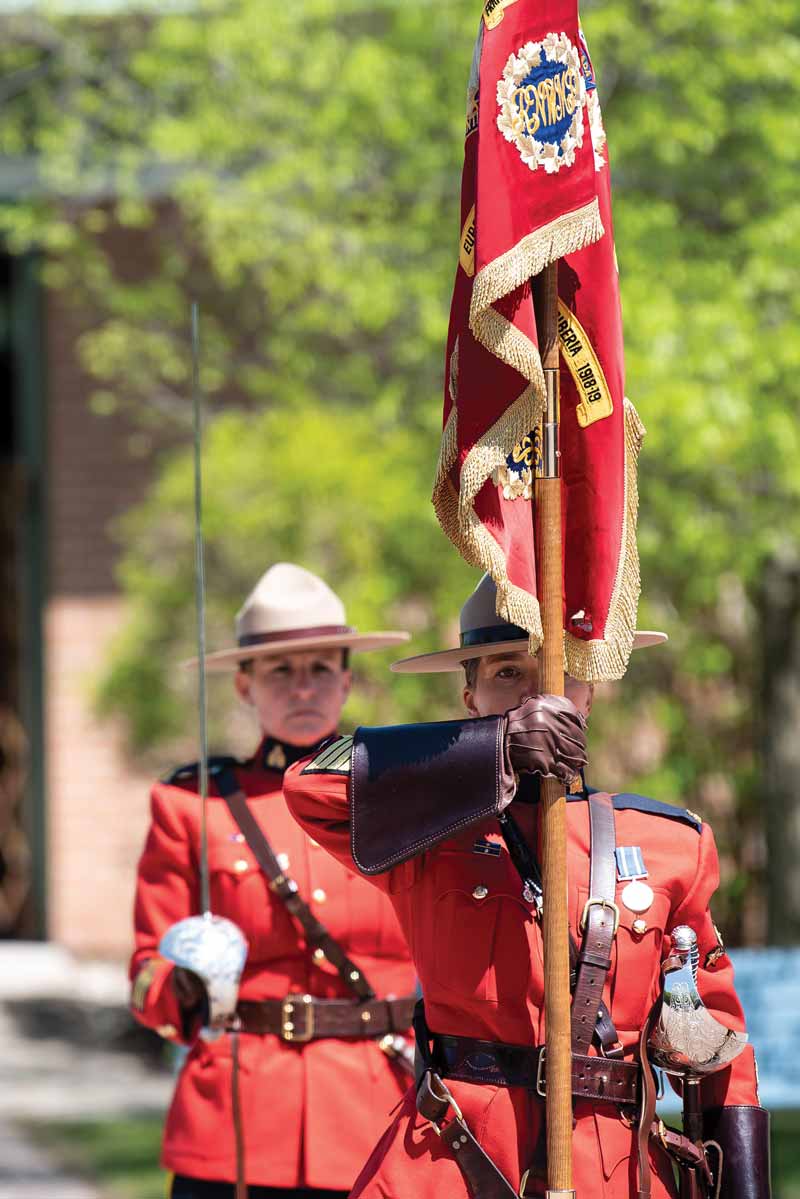
RCMP Guidon on parade, carried by National Div. Sergeant Major Elaine Maisonneuve (foreground), Sergeant Major Julie Gagnon (background), during the visit of Prince Charles and Duchess of Cornwall to the RCMP Stables, Ottawa, May 2022. [Serge Gouin, RCMP]
As such, it’s a perfect time to reflect on the RCMP’s storied past, particularly to edify the many Canadians who aren’t aware of the force’s service abroad to Crown and country.
The history told through honours received and carried on the force’s guidon is exclusive to its actions in theatres of war. The RCMP’s extraordinary contributions to international peace operations and United Nations peacekeeping is not included, though that’s not to say it doesn’t matter—rather that it’s not war per se. Anyone who has offered themselves in the service of peace during internecine civil strife and violence knows better.
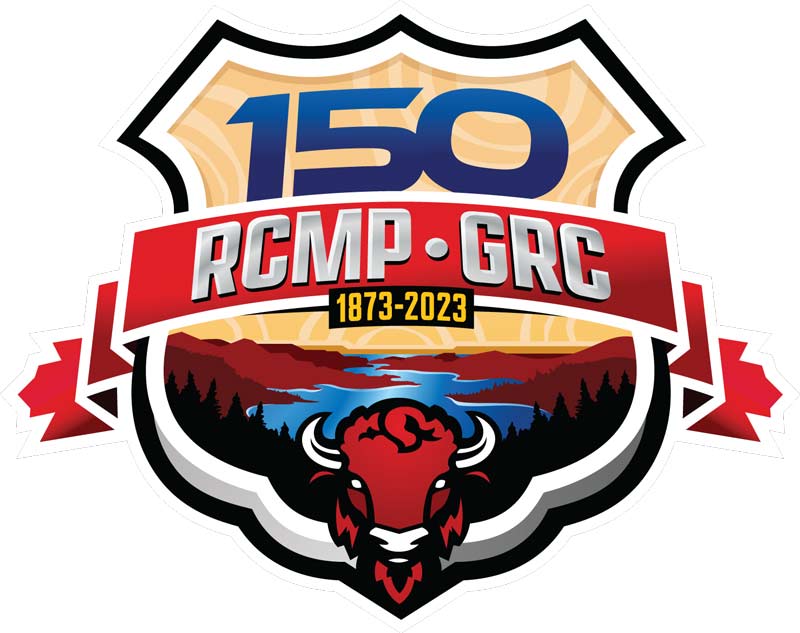
The RCMP 150 logo.
The RCMP is the only police force in the Commonwealth, if not the world, that is a colour-bearing corps. It proudly possesses a regimental banner that, according to its light cavalry traditions, is known as a guidon; derived from the French word guy d’homme, which means “guide man” in English—the horseman charged with carrying the regimental flag.
The RCMP guidon may be paraded, mounted or dismounted, on occasions consistent with policy and, according to historical convention, it’s carried and escorted by the force’s sergeants major, the stewards of RCMP regimental tradition.
The force’s original guidon was presented during a dismounted parade in the Riding School at Depot, due to inclement weather, in April 1935. The consecration service was conducted by the RCMP chaplain, and the governor general, the Earl of Bessborough, presented it to the force. It bore the RCMP’s first four campaign honours.
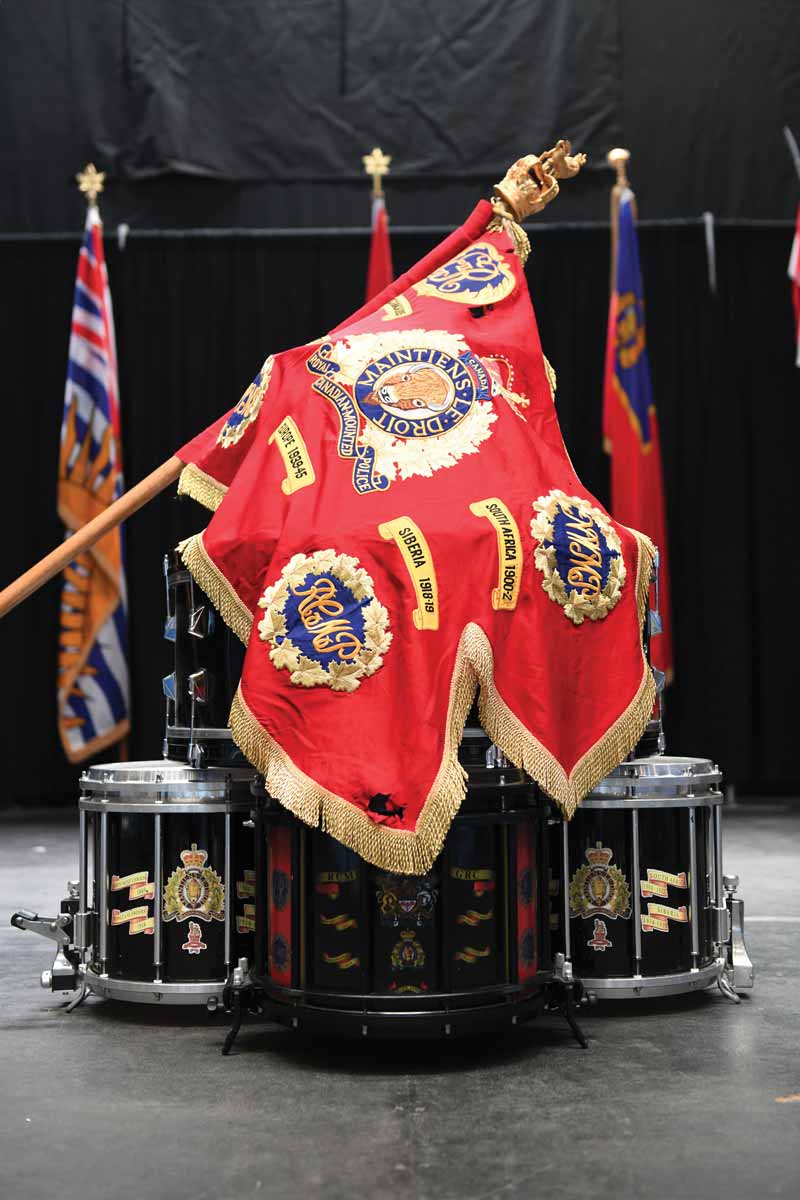
RCMP Guidon draped on regimental drums, at regimental funeral of Constable Shaelyn Yang, Vancouver, November 2022.[Leann Parker, RCMP]
SOUTH AFRICA, 1900-1902: NWMP members were drafted into the Canadian Mounted Rifles, while others were selected to form and lead Lord Strathcona’s Horse. They were deployed to South Africa with other armed elements of the British Empire to take part in the Boer War. In 1904, due to its record of service in western Canada and South Africa, King Edward VII conferred the Royal title on the force, and it became the Royal North West Mounted Police (RNWMP).
FRANCE AND FLANDERS, 1918: In April 1918, a RNWMP cavalry draft was organized consisting of 15 officers, 768 non-commissioned officers and men. It was deployed to France and Flanders, Belgium, as part of the Canadian Expeditionary Force where most were absorbed into existing cavalry units fighting in the First World War. From within the draft, a squadron comprised exclusively of RNWMP members (four troops consisting of six officers and 151 men) was transferred to the Canadian Light Horse Brigade. It was this group that would later become known as ‘A’ Squadron, RNWMP.
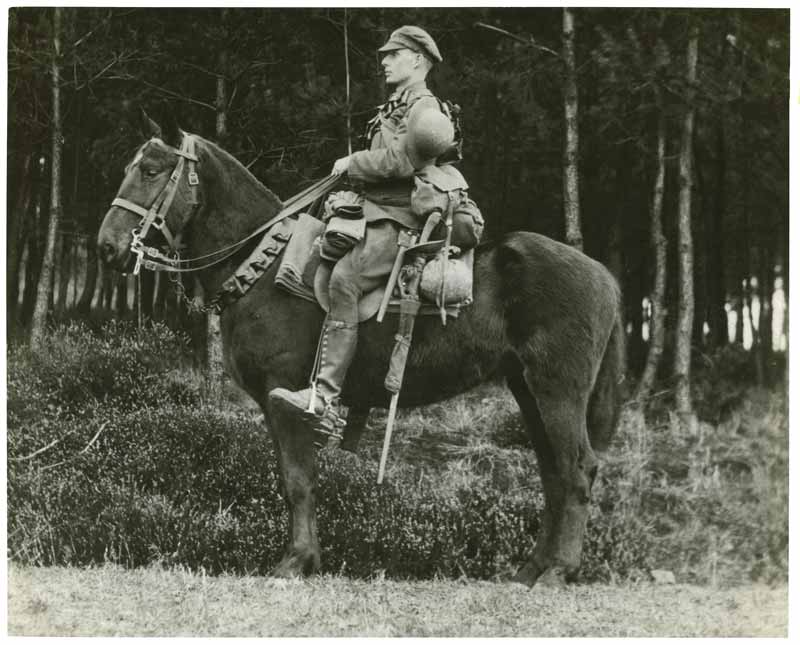
“A” Squadron trooper, Mons Belgium, 1918. [RCMP Archives]
At the outset of the Second World War, the Canadian government prohibited members of the RCMP from enlisting. It did, however, allow for a “representative unit” from the force to be formed and deployed as part of the Canadian Army. No. 1 Provost Company (RCMP) was formed from volunteers and deployed to England in 1939. It went on to serve in Sicily, mainland Italy and northern Europe, culminating in the liberation of Holland in 1945.
Following the war, the RCMP sought recognition for its overall contributions, particularly the actions of No. 1 Provost Company and its marine section. Instead of a theatre honour, the force was granted an “Honorary Distinction” composed of the badge of the Provost Company, with the dates 1939-45. A formal parade was held on Parliament Hill in September 1955, where the Honorary Distinction was affixed to the guidon by the Minister of National Defence George Pearkes on behalf of Queen Elizabeth II.
Starting to show its wear, the RCMP’s first guidon was replaced as part of the force’s centennial celebrations in 1973. The current guidon was consecrated and presented at a ceremony conducted on the parade square at Depot Division by the Queen in July 1973. The Honorary Distinction cypher was replaced with a Theatre Honour—Europe 1939-45—deemed more representative of the RCMP’s broader contribution to the war effort.
The original guidon was then laid up in the RCMP Chapel at Depot in September 1973 during a church service attended by veterans of No. 1 Provost Company.
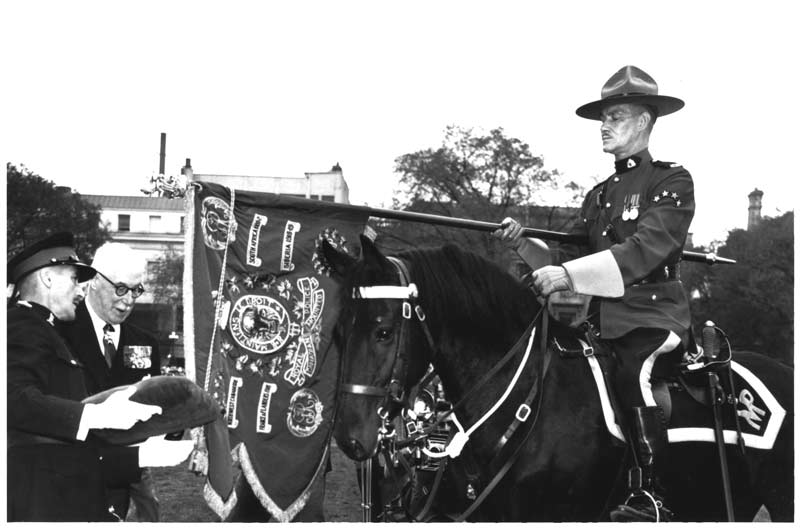
Guidon carried by HQ Division Sergeant Major William ‘Jock’ Taylor, presentation of Provost Corps Honorary Distinction, Ottawa, September 1955.[RCMP Archives]
Chief superintendent (then corps sergeant major) Darren Campbell initiated and led this initiative, with support by superintendent (then sergeant major) Dave Hall. The RCMP Veterans’ Association, Mark Gaillard, Dave Muirhead and Graham Muir were also key contributors.

No. 1 Company, Provost Corps, England, 1940. [RCMP Archives]
- The Corps Operational Honour, Second World War 1939-45, which will replace the Theatre Honour, Europe 1939-45, with a much-expanded elaboration of the RCMP’s contribution to the war effort.
- The Canadian Provost Corps Honorary Distinction, which will be restored.
- A new Corps Operational Honour, Afghanistan 2003-14. In Afghanistan, the RCMP played a pivotal role in Canada’s whole of government strategic and operational thrust to prevail militarily against a virulent insurgency while concurrently confronting pressing priorities that underpinned the machinery of civil society. The RCMP deployed, enabled and led a cadre of 297 Canadian police officers over the course of the mission, of which 138 were serving members.
As the force looks to the future, one can only imagine what may lie ahead in terms of international engagement. RCMP members and other Canadian police, for instance, have been on the ground in Ukraine for years as part of bilateral arrangements to conduct institutional reform and improve the capacity of Ukrainian police.

Acknowledgement: The writer would like to acknowledge the contribution of two veterans who stand first among peers as champions of force history and lore. Writing on the early exploits of RCMP corps that have given rise to accomplishments the force claims as theatre and campaign honours, now re-cast as ‘Corps Operational Honours.’
Advertisement
No related posts.





















